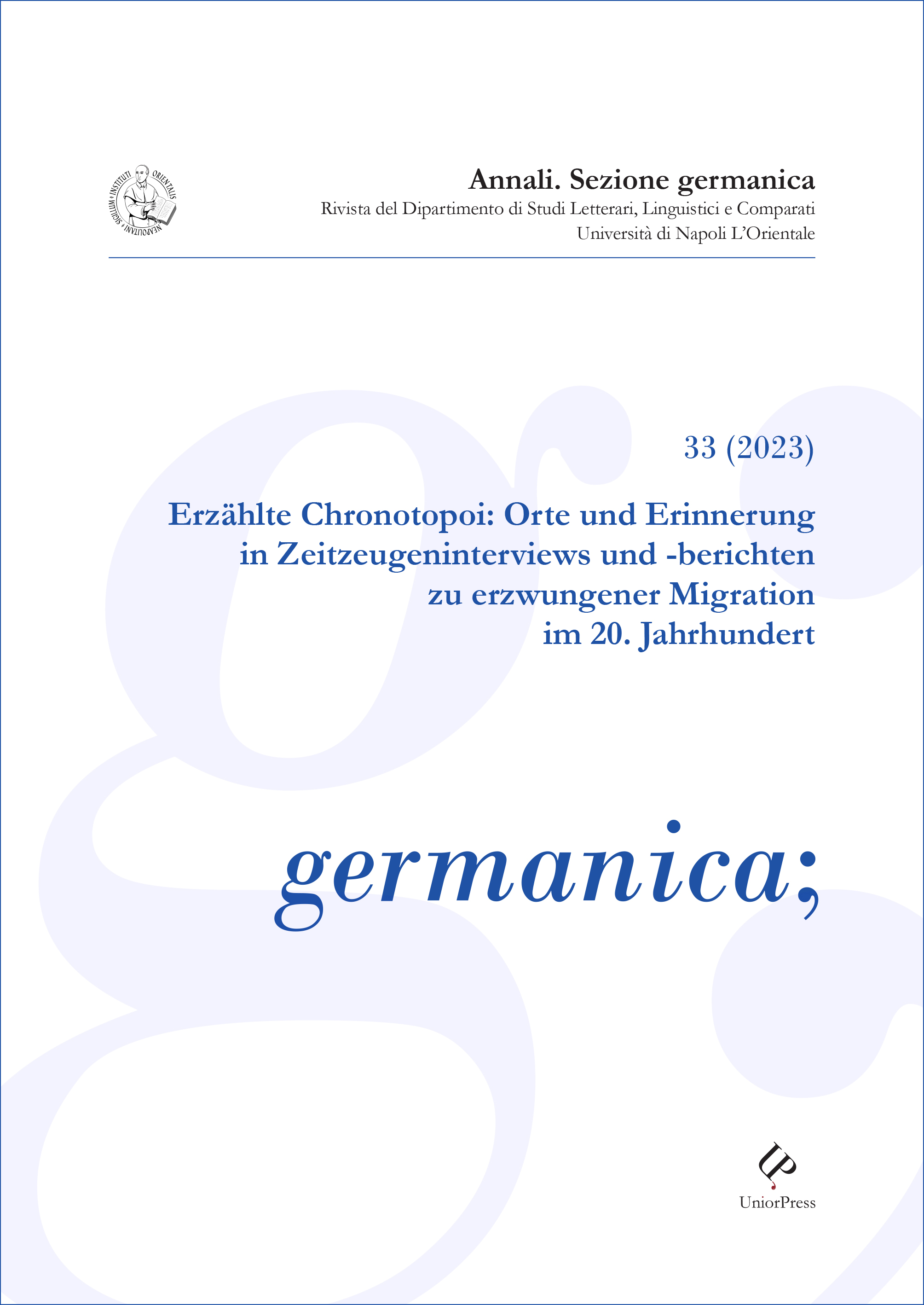Children at the border. Narrative reconstruction of Kindertransport journeys
DOI:
https://doi.org/10.6093/germanica.v0i33.10740Keywords:
border crossing, chronotopes, trauma, memory, narrationAbstract
In this article I analyse three narrative interviews that belong to the corpus Flucht und Emigration nach Großbritannien (“Flight and Emigration to Great Britain”), a collection of interviews gathered in 2017 with former Kindertransportees, i.e. Jewish children between 4 and 16 years old accepted as migrants in Great Britain (cf. Thüne 2019). In these interviews, the speakers were invited to give their individual accounts of their journeys from Nazi-Germany or Austria to Great Britain, with a special focus on how they perceived the crossing of the border. The aim of the article is to analyse examples from these interviews in a close reading that – where possible – makes use of Bakhtin’s concept of chronotope. I focus on three aspects: 1) how they perceived the border crossing and what they remember of the journey in 1939 in general; 2) what type of text they produced (more a narration or closer to a report in style); 3) what these examples allow us to conclude about the relation between individual records on the one hand and collective and cultural memory on the other.
Downloads
Published
How to Cite
Issue
Section
License
The authors who publish in this Journal accept the following conditions:
- The authors retain the rights to their work and give the magazine the right to first publish the work, simultaneously licensed under a Creative Commons License - Attribution which allows others to share the work indicating the intellectual authorship and the first publication in this magazine.
- Authors may adhere to other non-exclusive license agreements for the distribution of the version of the published work (eg deposit it in an institutional archive or publish it in a monograph), provided that the first publication took place in this magazine.
- Authors can disseminate their work online (e.g. in institutional repositories or on their website) before and during the submission process, as it can lead to productive exchanges and increase citations of the published work (See The Effect of Open Access).


